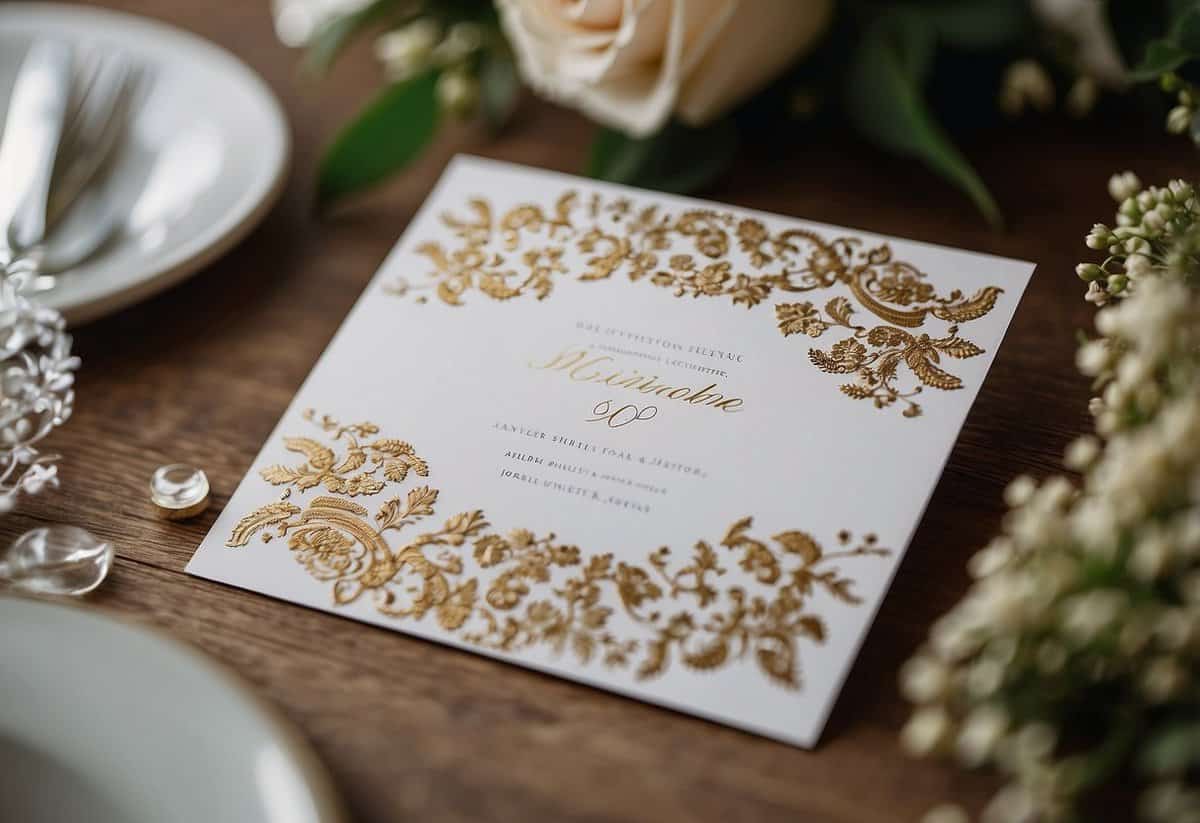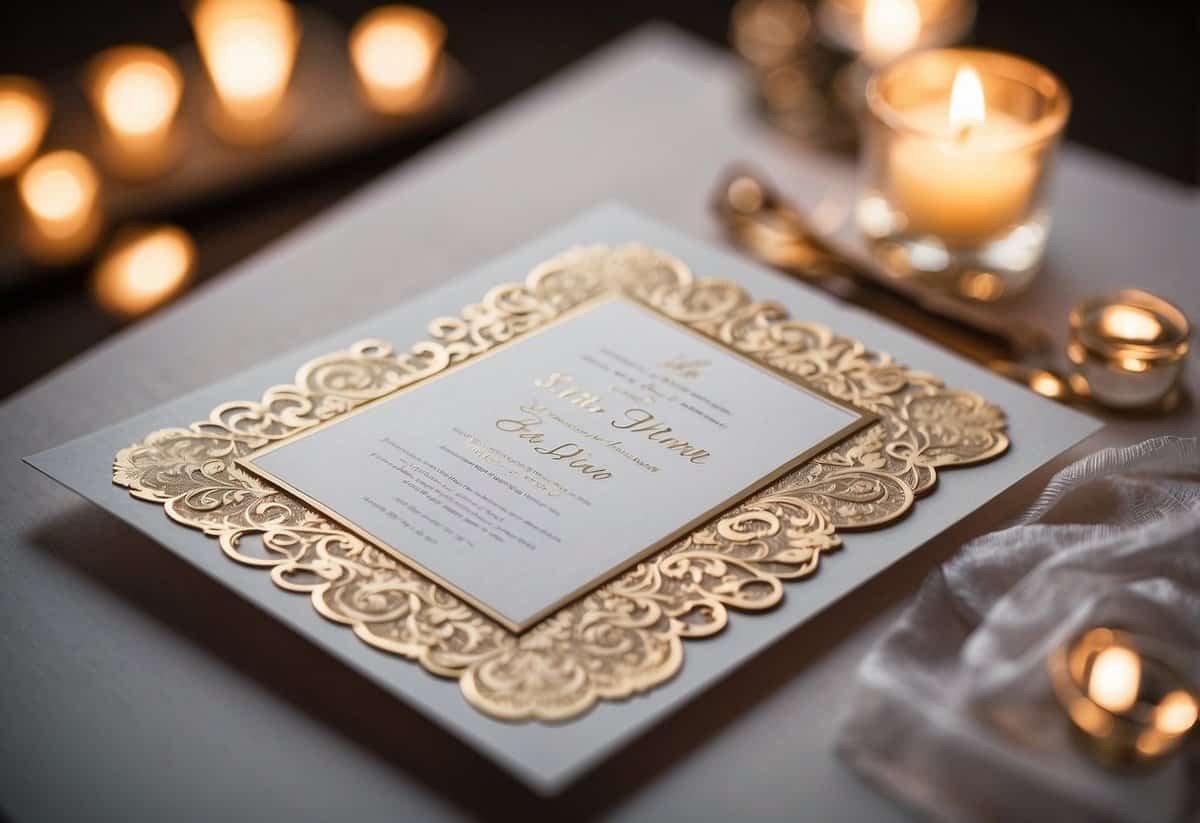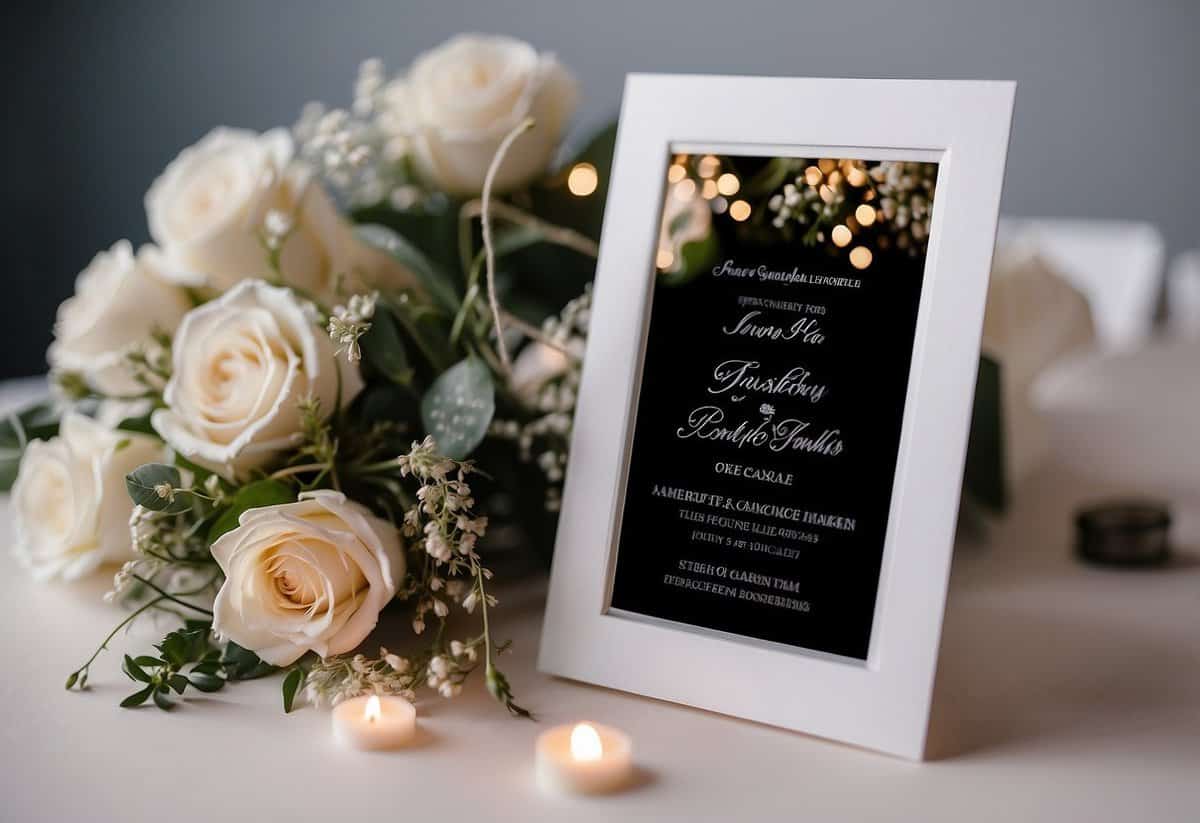Does the Bride Put Her Last Name on the Wedding Invitation? A Friendly Guide
Planning a wedding can be both exciting and overwhelming, with many details to consider, including the wording on your invitations. One common question is whether the bride should put her last name on the wedding invitation. Traditionally, if the bride’s family is issuing the invitation and the bride shares their last name, only her first and middle names are included. For the groom, a similar rule applies, and only his first and middle names are used.

Modern etiquette, however, is much more flexible, allowing couples to personalize their invitations based on their preferences. If both parties are hosting the wedding themselves, including both the bride’s and groom’s full names is appropriate. This approach reflects a sense of equality and partnership, which many modern couples appreciate.
Whether you choose to follow traditional etiquette or modernize your approach, the key is to make sure your invitations reflect your personal style and preferences. Having your names presented the way you prefer will set the right tone for your special day. For more insights on wedding invitation etiquette, you can check out this helpful guide on whose name goes first on a wedding invitation.
Wedding Invitation Basics

Wedding invitations are a key part of your big day. They set the tone for your event and provide important details to your guests. Let’s break down the basics to make sure your invitations are spot on.
Importance of Wedding Invitations
A wedding invitation does more than just inform guests of the event’s time and place. It reflects the couple’s style and sets expectations for the wedding theme and formality. Whether you’re planning a modern wedding or a traditional one, the invitation gives guests their first glimpse of what to expect. It’s also an important piece of wedding stationery that becomes a keepsake.
Additionally, invitations help with logistics. They guide guests about RSVP deadlines, dress codes, and even accommodation options if necessary. Personalization is key to making your invitations special and memorable. Elements like unique designs and thoughtful wording can make a big impact.
Components of a Traditional Invitation
A traditional wedding invitation typically consists of several components: the invitation card, a reply card, and sometimes additional information cards. The invitation card includes the names of the hosts, request line, names of the couple, date, time, and location. This is where wedding invitation etiquette comes in. For example, traditionally, the bride’s name precedes the groom’s name on the invitation.
The reply card (or RSVP card) is crucial for headcounts and meal planning. It often includes a pre-addressed, stamped envelope to make it easier for guests to respond. Some couples might also add a “save the date” card before sending the formal invitations. Other optional components might include directions, accommodation details, and a map.
Each part should match the overall theme of your wedding and maintain clarity and elegance, ensuring your guests have all the information they need.
Addressing the Last Name Dilemma

When planning your wedding invitations, deciding whether to include the bride’s last name can be challenging. This decision often depends on whether you lean towards traditional customs or prefer modern practices.
Traditional Last Name Usage
Traditionally, the bride’s name appears first on wedding invitations. In this case, you typically include the bride’s full name, followed by the groom’s full name. Including the bride’s last name helps distinguish her identity, especially if her family name holds significant importance.
For example:
- Mr. & Mrs. John Smith request the honor of your presence…
Including the bride’s last name maintains the formality and clarity often expected in traditional invitations. It respects societal norms where the bride’s family might host the wedding, thus honoring both families.
Modern Approaches to Surnames
Modern etiquette offers flexibility on listing last names on wedding invitations. Many couples now choose to list both names in a way that reflects their personal preferences and values of equality.
For instance:
- Jane Doe and John Smith invite you to celebrate…
Some couples opt to list names alphabetically to avoid giving preference to either surname. This approach balances the representation of both partners’ identities, making the invitation feel mutual and inclusive.
Whether you follow traditional norms or modern practices, the focus remains on celebrating your union authentically.
If surnames are not used, you can still convey formality and respect through thoughtful wording choices that emphasize the unity and joy of the occasion.
The Art of Ethical Inclusivity

Creating wedding invitations that reflect inclusivity is essential in today’s diverse society. Addressing family dynamics, same-sex couples, and cultural traditions with sensitivity can make everyone feel honored and included.
Handling Diverse Family Dynamics
When dealing with divorced and remarried parents, it’s crucial to navigate with care. Handle this by including all relevant family members without excluding anyone. For instance, you may want to mention both sets of parents and stepparents. For example:
- Mr. John Doe and Ms. Jane Smith
- Mr. and Mrs. Robert Johnson
For a deceased parent, you can still honor their memory by including a heartfelt mention. Using respectful titles and acknowledging relationships show thoughtful etiquette and respect for all involved.
Same-Sex Couples and Etiquette
Modern couples, including same-sex couples, often personalize their invites. There are no rigid rules, giving you the freedom to choose the order of names based on preference. This might mean listing names alphabetically or by whose name sounds better first.
Respect and sensitivity are key. For example, if a couple prefers their family or friends to be acknowledged equally, ensure the invitation reflects that balance. Clear and open communication with your partner can ensure the invitation feels authentic and inclusive.
Honoring Cultural Traditions
Cultural traditions carry significant weight in weddings. Eastern cultures may have specific etiquette guidelines that differ from Western norms, like placing the elder’s name first. Understanding and honoring these traditions can add depth and meaning to your invitations.
Consult with family members or elders to incorporate traditional elements correctly. Including symbols, colors, or phrases that resonate within your culture can personalize the invite while showing respect for heritage. Balancing modern inclinations with traditional customs allows for an enriched and inclusive celebration.
Using these strategies, your wedding invitation can become a meaningful representation of inclusivity and respect for everyone involved.
Navigating Wedding Planning and Etiquette

Planning a wedding involves many details and proper etiquette. You will need to decide who handles planning, understand the role of hosts, and choose the right tone and style for your big day.
Working with a Wedding Planner
A wedding planner can be a huge help in organizing your event. They handle everything from scheduling to managing vendors. When you hire a planner, you get someone who knows the ins and outs of wedding planning.
Choosing a planner involves checking their experience, reading reviews, and interviewing potential candidates. Make sure they understand your vision and needs. A good planner can offer guidance on traditional wedding etiquette and help you navigate any points of contention.
Some planners offer full-service packages, while others provide specific services like day-of coordination. Decide what level of support you need and budget accordingly.
The Role of Hosts
The hosts of the wedding play an important role in setting the tone for the event. Traditionally, the bride’s parents host the wedding, but modern approaches allow for more flexibility. The hosts may include both sets of parents or even the couple themselves.
When the bride’s family acts as hosts, it is customary to follow traditional wedding etiquette in invitation wording. This means including their names and welcoming guests to the celebration.
If the couple is paying for the wedding, the invitation might start with their own names, reflecting a more modern approach. Ensuring that everyone understands their role can help avoid misunderstandings.
Choosing the Right Tone and Style
Your wedding’s tone and style will set the mood for the day. Consider the location, dress code, and overall vibe you want to create. Formal weddings call for elegant styles and etiquette, while casual celebrations offer more freedom.
Selecting a theme can guide decisions on décor, attire, and even menu choices. Themes help create a cohesive look and feel. Communicate your chosen tone in the invites and other communications.
Dress code is another aspect where clarity is key. Mention if the event is black-tie, semi-formal, or casual. This guidance helps guests dress appropriately, aligning with your wedding’s style.
Final Touches to Your Wedding Invitations

When you’re putting the final touches on your wedding invitations, focus on clear and elegant formatting. Pay close attention to how you present details like the date and time, R.S.V.P. information, and reception details.
Formatting the Invitation Properly
Proper formatting of your wedding invitation sets the tone. Start with the host line, mentioning who is hosting the wedding. Traditionally, this is the bride’s parents, but it can also be the couple.
Include date and time clearly. Write the date fully spelled out, like “Saturday, the twenty-first of June.”
State the location with the full street address to avoid any confusion for guests. List the ceremony details first, then the reception line if it’s at a different location.
Use elegant fonts and avoid overcrowding the invitation with text. Keep it clean and easy to read.
Detailing the Reception and Registry Information
If the reception is at another venue, add a line specifying it. For instance, “Reception to follow at the Grand Hall.”
When it comes to the registry information, it’s best to include it on a separate card rather than on the invitation itself. You can indicate where guests can find your registry without taking up too much space.
Provide clear R.S.V.P. instructions, including a reply card or an online link. Mention when and how guests should respond.
By detailing these elements properly, you ensure that your guests have all the essential information for your wedding day.



